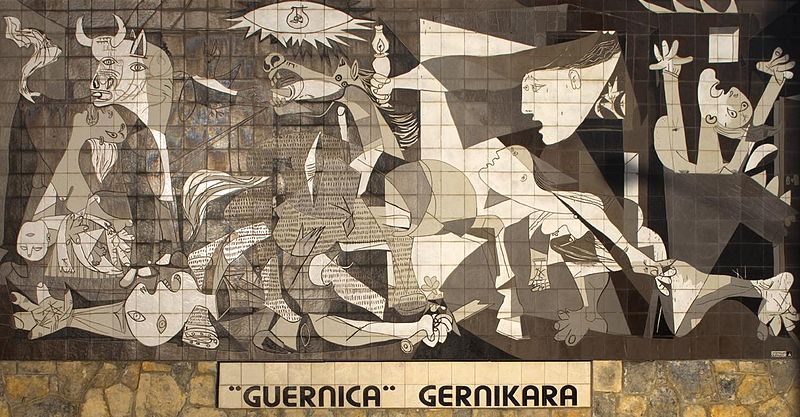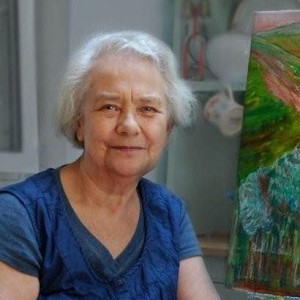I have been reading Iain McGilchrist’s book “The Master and his Emissary” and thought I might share some personal reflections. There is a segment in the book about the right hemisphere, emotion and music, which drew my interest due to its relevance to my own life. This post is also inspired by the recent posts by Norma and Barry, on art and poetry.
For as long as I can remember I have been strongly affected by music, especially the music made by human voices. Hearing certain people sing touches my soul like almost nothing else can do. I am moved, often to tears, sometimes to the point of sobbing – which can be, socially, quite uncomfortable. I have puzzled over this strong response at times, somewhat conscious of being seen by others as an “over-emotional” or “suggestible” person. With time however I have (nearly) stopped being embarrassed by it, and instead I’ve come to appreciate how now and then I get to have these microscopic emotional journeys, right were I sit. And now I have learned something of why, and how, this happens.
As McGilchrist explains in the book, when it comes to processing music, the right hemisphere of the brain deals with harmony, melody, tone, intonation, timbre and pitch-processing. It also has a special relationship to “sad” feelings as well as feelings of connectedness.
Of course, the left hemisphere, too, plays a role in music appreciation and processing (especially, it turns out, for professional musicians who, plausibly, have a more analytical and automated relationship to music they “know”). Certain aspects of rhythm, for example, are often processed in the left hemisphere and due to its affinity for language music with lyrics will involve the left hemisphere. Nevertheless, the way music can evoke emotions in us is a testament to the involvement of the right hemisphere.
Timbre, harmony and rhythm, along with a melancholy theme, seem to be my required ingredients for this musical “flying ointment”. At the end of this post, I will link to a few of my favourite musical intoxicants, songs that pull all the right strings of the right hemisphere for me.
McGilcrist writes:
“It has been said that music, like poetry, is intrinsically sad and a survey of music from many parts of the world would bear that out – not, of course, that there is no joyful music, but that even such music often appears to be joy torn from the teeth of sadness, a sort of holiday of the minor key. It is what we would expect in view of the emotional timbre of the right hemisphere; and there is a stronger affinity between the right hemisphere and the minor key, as well as between the left hemisphere and the major key. The pre-Socratic philosopher Gorgias wrote that ‘awe [phrike] and tearful pity and mournful desire enter those who listen to poetry’, and at this time poetry and song were one. The relationship between music and emotion is fascinating, and to some degree baffling. Suzanne Langer said that music not only has the power to recall emotions we are familiar with, but to evoke ‘emotions and moods we have not felt, passions we did not know before.”
This ability is a great gift to us. It seems to me that we ought to take every opportunity to broaden our horizons in this way, and that doing so can help further integration. The fact that sadness and feelings of darkness and despair are primarily the territory of the right hemisphere is also meaningful, especially keeping in mind that the left hemisphere is associated with longing for non-ambiguity, certainty and dogmatic belief. McGilchrist explains that there is a connection between realism and depression. Perhaps cultivating feelings of awe and longing can help to connect us to the world beyond the illusory certainty and self-sufficiency of the left hemisphere, and keep us humble and curious.
Awe is an emotion I feel is very important to the Middle Way. There are some interesting connections between wonder and curiosity, spirituality and skepticism, and I’d like to expand on this further in a later post. In the meantime, here are some songs that inspire awe in me. For me, they all have that peculiar melancholic joy that the right hemisphere enjoys wallowing in.
I think it would be lovely to see suggestions in the comments of music that moves, or inspires awe in you.
Dead Can Dance – “Yulunga” I find this quite awe-inspiring, and the video provides some dreamy images to stimulate you and imbue with your own associations and meaning. It is also interesting because although it has lyrics, the left hemisphere would have little to work with here as they are entirely an idioglossia (a made up language). Unfortunately the video ends a little bit abruptly, but the journey there is worth it!
Esbjörn Svensson Trio – “From Gagarin’s Point of View” An instrumental song; light and melodic, slightly melancholy and smooth.
Tool – “Right in Two” This is a song that uses complex rhythms and melodies and has beautiful vocals and also some great lyrics to ponder. It inspires a dark sense of wonder in me. A bit of a warning: it does get quite heavy and loud at the halfway mark.
Imogen Heap – “Just for Now” A wondrously creative performance by quirky songwriter Imogen Heap.


